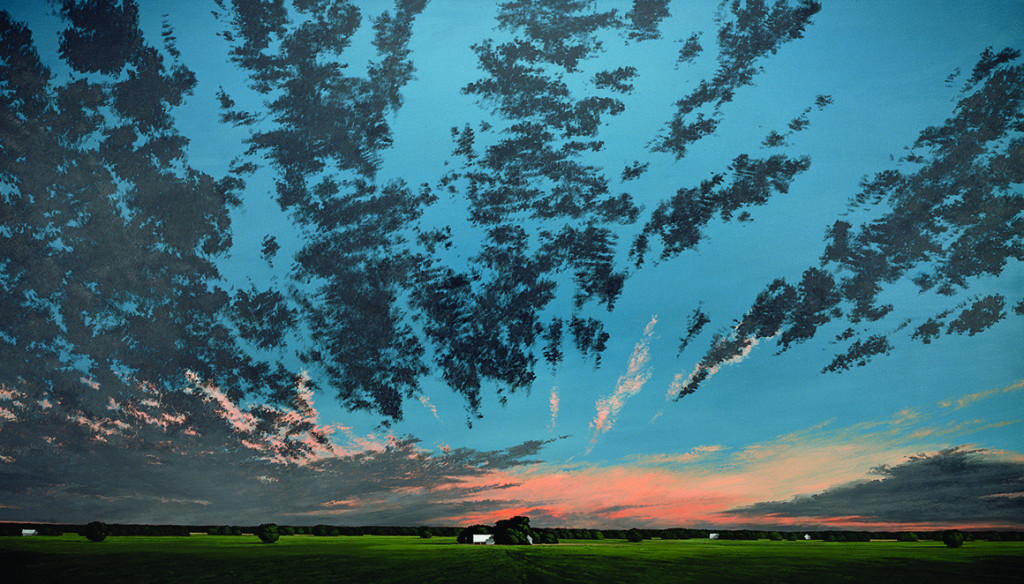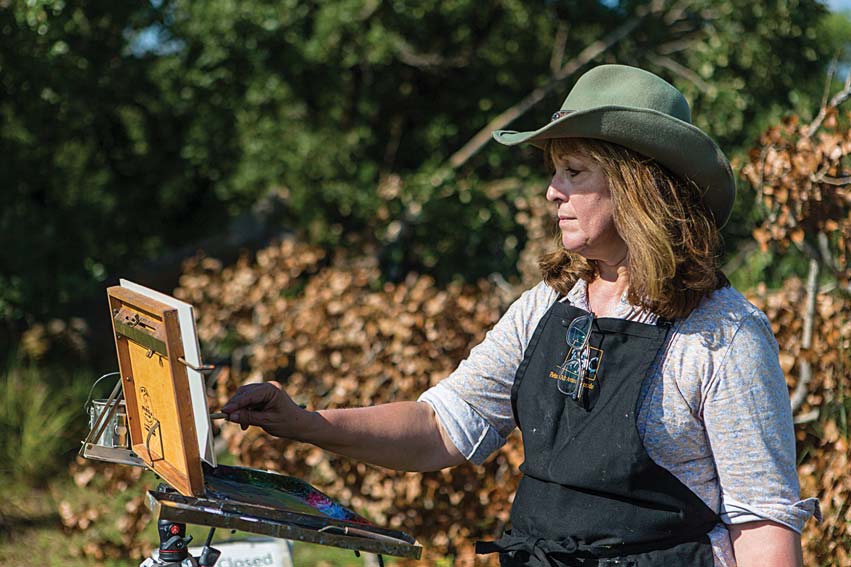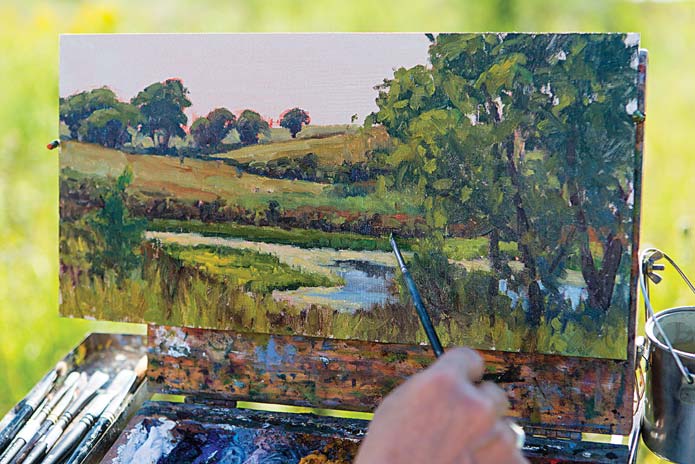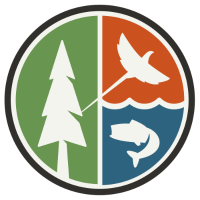
Here in Nebraska, beauty surrounds us constantly. It tends to announce itself most clearly in uninterrupted moments of quiet a long morning in a deer blind, a lazy tubing trip down the Niobrara, an evening of calm after an afternoon of hiking. Seeking out that beauty can be its own goal and reward, driving us into the outdoors with the need to capture it forever.
Photography is a common method, both accessible and familiar. Less well known, but growing in popularity, is the practice of painting en plein air – directly from nature.
Plein air (prounounced pleyn air) is a French term that means “open air” and refers to the act of painting on location using natural light. Some artists use their plein air pieces as inspiration for works completed in the studio, while others prefer to complete entire paintings on site.


Plein air artists work within an extremely limited time frame, usually two or three hours for an entire painting, before the light and shadow alter too drastically. Artists must also contend with unpredictable weather, bugs and animals, limited equipment, and subject matter that may or may not stay in place.
On the other hand, plein air pieces often have a freshness and vitality that is lacking in studio work. Young artists are often encouraged to paint en plein air, as it provides a masterclass on painting realistic light and color.
A plein air painter does not copy nature or include everything she sees. Instead, the challenge is to winnow down a scene into its most essential shapes, and arrange them into an aesthetically pleasing composition.
A good plein air piece captures the spirit of a particular time and place, and inspires the viewer to experience the emotion and wonder that drew the artist to that site in the first place.
Nationally acclaimed painter Keith Jacobshagen of Lincoln has been painting en plein air for more than 50 years. “The best compliment I get is when someone tells me, ‘We drive out to my grandparents’ house every couple of weeks, and all of a sudden, I am really enjoying looking at the landscape. Before that, I was just kind of bored.’”
Plein air painting is deeply personal, often connected to an artist’s upbringing and earliest memories. Jacobshagen’s father was a pilot who scrutinized the skies and appreciated their beauty. “I remember as a kid, him coming into the house and saying, ‘You’ve got to look at this cumulous cloud,’” he said.
What Jacobshagen saw mesmerized him. “There’d be a whole line of thunderstorms out there, stretching from horizon to horizon, with the late afternoon sun on them. Just extraordinary. So I started looking pretty early on, paying attention to it.”
Painter Debra Joy Groesser of Ralston grew up camping, fishing and hiking with her family.
“Dad just instilled a love of nature in us,” she said. “I think about all those memories when I’m out painting. You just feel like you’re home again, almost.”
Among the rewards of plein air is a renewed connection with nature. “If you have a love for nature and being outdoors, there’s no greater gift or joy than just being able to sit and study nature for three hours,” said artist Todd A. Williams of Central City. “There’s just something it does for you mentally and spiritually.”
The more a person is exposed to outdoor painting, the more likely they are to see the outdoors in a completely different way. Groesser describes it as a light bulb switching on. She watches for it in her students, and she’s noticed it in her husband, who often accompanies her in the field. “It’s really fun to hear him say, ‘Oh gosh, look at the pinks in those clouds, the purple in those hills,’” she said.
Groesser, Williams and Jacobshagen, all nationally-recognized professional artists, say that Nebraska offers a landscape that is as unique and rich with inspiration as anywhere else in the world. They appreciate its diversity, its awe-inspiring horizons, its subtle beauty, its stunning light. A visiting painter friend told Groesser that Nebraska’s light in February is “as beautiful as Tuscany.”
“It’s a difficult landscape to paint, because there are so many subtleties to it,” Groesser said. “But it’s incredibly beautiful.”
If you’re interested in learning how to paint en plein air, the best way to get started is to take a class. Some professional plein air artists, like Williams and Groesser, offer workshops and classes. Beginning art courses at local universities and community colleges are also a good launching pad.
Even if you never pick up a brush, you can still experience some of what makes plein air painting special. “Just sitting and staring at the light in your backyard sometimes can be enough,” Jacobshagen said.
He acknowledged that in our busy, complex lives, this is often seen as a waste of time. “But I think when you pay attention to what’s out there, when you pay attention to the landscape and the sky, it’s regenerative. It’s a very positive thing to do, whether you’re an artist or not.” ■
To learn more about the artists featured in this article, visit keithjacobshagen.net, toddwilliamsfineart.com, and debrajoygroesser.com.

Written by: Renae Blum
Renae works for the Nebraska Game and Parks Commission and has written for NEBRASKAland Magazine and the Lincoln Journal Star.The post Outdoor Painting: Nature in 2-D appeared first on NEBRASKALand Magazine.
















